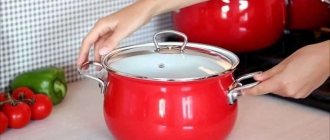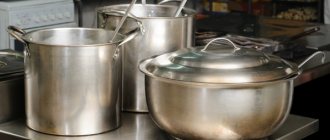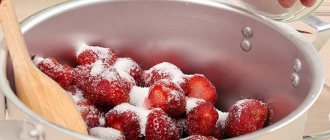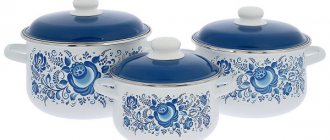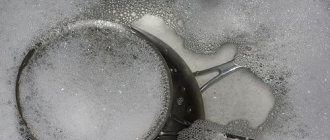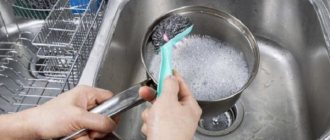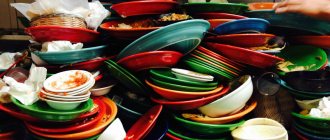To keep the milk edible
- Hot milk needs to be poured into another container, placed on the window and the window opened so that the burning vapors come out.
- In milk with a burnt smell, you should place 1-2 pieces of fruit tree charcoal, wrapped in gauze.
- After 30-60 minutes, the coal will absorb the smell and partially unpleasant taste of burnt milk. The coal can now be thrown away.
- Strain the milk several times through a gauze filter without squeezing and rinsing it each time under running water.
Charcoal can be replaced with a crust of dry bread in gauze. It will be able to absorb the unpleasant taste under the lid before the milk cools, and it will become edible.
Cleaning the stove
Use special tools or a scraper
While the water is boiling on another burner, the dirty part of the stove should be cleaned with any creamy stove or dish cleaner (for example, Universal or Extra), especially if the stove is glass-ceramic. The cream paste does not leave scratches on the surface, but it must first be applied to a damp, burnt spot for 15 minutes, then cleaned off with a damp sponge.
If you don’t have cream paste, you can clean it with Sorti or Pemo-Lux powder containing soda and active additives that corrode dirt without harming the surface of the stove and the dishes.
Salt
Fill an aluminum or stainless steel pan with cold water and let it sit for 10-15 minutes. Then drain the water and fill the bottom with salt. After 2-3 hours, remove the salt from the dish and rub its inner surface with the hard side of the sponge. It is not necessary to use detergents. The enamel pan must first be removed from the stove and allowed to cool. Do not fill it with water immediately so that the enamel does not peel off. Then follow the steps described above. If carbon deposits remain, repeat the procedure again.
Cleaning the saucepan
A milk stain on an aluminum pan can be removed first with cold, then hot water with soap and ammonia. You can scrub off burnt milk with chalk or a mixture of chalk and clay.
After boiling, cover the container with a lid and let stand for 10-15 minutes. If the pan is enamel, then use a soft dish brush to rub the stain without pouring out the water.
Clean the walls with light movements
If the pan is made of stainless steel or aluminum, then you can use a brush made of metal shavings to scrub away the burnt marks, but this should be done with light movements.
If blackness forms on the wall of the aluminum pan, remove it with a cloth moistened with table vinegar. Then the container is rinsed with warm water. Ammonia will remove blackness from nickel-plated and silver dishes.
Drain the water and use a brush or sponge to remove any remaining burnt milk under running warm water.
If some of the brown milky burn remains at the bottom of the pan, then sprinkle it with a mixture of soda and salt (or separately - 5 tablespoons each) and moisten with warm water to form brine (concentrate). Let stand overnight. In the morning, you can heat the brine and clean it with a sponge or plastic dish brush.
A pan made of aluminum, stainless steel or enamel should be filled with whey, 1-2 cm above the burnt spot and left for a day. Next, drain the whey and wash the container with dish soap. Lactic acids will soften burnt milk, so it can be easily removed with a sponge or plastic dish brush.
To clean copper, brass, stainless steel and enamel saucepans, you can prepare your own product by mixing:
- 2 parts laundry soap;
- 3 parts ammonia;
- 9 parts chalk powder;
- 6 parts water.
Cleaning a burnt aluminum pan
An aluminum pan, like an enamel pan, should be handled with care. Only soft sponges should be used for such purposes. If there are dark spots on the bottom, you can remove them in a simple way. You need to boil a cut apple or onion in this container.
Baking soda is another great cleaning agent that can replace dishwashing detergent. You can also use vinegar, soak a sponge in it and wipe the darkened surface.
No smell of burnt milk in the apartment
Get rid of the smell of burnt milk in your apartment:
- Steam any fragrant herb, coffee beans or orange peels in a container.
- Close the previously open windows, walk through the rooms with the aromatic broth and put the container on the fire again. As soon as steam begins to form, you can turn off the burner.
- After an hour, the windows can be opened and the room ventilated. If you have an air conditioner, you can turn it on to the “fan” mode until the burnt smell disappears.
Fragrant herbs can be replaced by pleasant essential oil and aroma lamp. At 10 m you need to add 5 drops of essential oil to the aroma lamp.
kakpostirat.com
What not to do
The use of metal sponges and scrapers, which effectively remove almost any dirt, including rust, will undoubtedly speed up the cleaning of any utensils, including pots.
Physical cleaning methods help quickly and effectively remove even the most stubborn plaque and scale.
The other side of the coin is damage to the coating inside and outside the pan, especially for models with non-stick, Teflon coating and enamel. Under no circumstances should abrasives be used to clean glass and glass-ceramic pans - use only chemicals.
In general, it is recommended to use abrasive cleaning methods only on old dishes that you don’t mind. These methods include all home-made detergents using soda, salt, sugar, sand and other solid crystals. The use of rice is allowed - its rounded ends are not so aggressive towards delicate ceramic coatings (Tefal models).
Remove burnt semolina porridge, pasta, soup
The remains of porridge or yesterday's pasta could not only burn, but also simply dry out overnight if the pan was left unwashed on the stove.
If the food is simply dry, you can try soaking it with hot water. Water can either be drawn from the tap or heated on the same stove. If the food is not burnt anywhere, then hot water will soak it very quickly. For better effect, add a small amount of detergent.
If the porridge or pasta has already burned, hot water will dissolve only the weakest layer. You can leave the pan with added detergent for several hours, then try to clean it.
Burning can also be eliminated with a small amount of citric acid dissolved in hot water. Food acids are not recommended for use on damaged enamel coatings - this will lead to rapid damage to the equipment.
Milk and dairy products
Burnt milk is one of the most common stains on pans.
If the scale of the tragedy is not very large, then ordinary hot water should help clean any pan from burning. To do this, fill the pan with ordinary water to the level of the burnt spots and place it on the stove. You need to boil for about half an hour, when the water becomes warm, try to wash it off with a regular dishwashing sponge.
If you can’t wash it right away, then you need to add a few tablespoons of soda ash to hot water and stir well. The pan is left overnight, and the procedure with the sponge is repeated in the morning.
Dried puree, jam, burnt caramel and chocolate
When these products dry out, they are very dense and hard, like soles, so boiling may not help.
Here you need to arm yourself with more caustic agents, for example, food acids, soda or “Whiteness,” which will even help against burnt sugar and sugar beets.
Acetic and citric acid, as well as freshly squeezed lemon or orange juice, can be used according to the instructions described above. It is allowed to use ammonia or ethyl alcohol as an alternative.
“Belizna” deserves special attention - a caustic liquid with active chlorine, which very quickly destroys any, even the most durable, stains. It can also be used not in pure form, but diluted with a small amount of warm water to reduce the concentration.
Puree and jam, as well as apple marmalade, quickly react with acids and active chlorine. After half an hour or an hour, you can already make attempts to remove the contamination from the burnt jam, which will fall off in flakes. It is recommended to protect your hands with durable rubber gloves, because these liquids have a destructive effect on human skin. “Whiteness” can dissolve even dried beans and peas.
Burnt meat, potatoes
Activated carbon can be used to clean the burner, home oven, external and internal sides of cauldrons.
It is especially effective in the case of isolated stubborn stains.
A pack of activated carbon should be crushed into a fine powder and sprinkled generously on the stains. After half an hour, cold water is added and the surface is left in this form for 1 hour. After this, the fumes are removed with a simple cloth or sponge.
If the charcoal was unable to completely remove the stain to its full depth, the procedure is repeated several more times.
Burnt oil, fat
Before you wash a saucepan or saucepan from carbon deposits with professional chemicals, you need to try high-temperature treatment, which will cause the oil to begin to melt even in this state.
Strong heating of dishes, including greasy frying pans, should be carried out in a well-ventilated area so that the smell that will be released does not accumulate in the kitchen.
Boiling water for a long time with the addition of a few tablespoons of dry citric acid, soda or salt will also help. Under the influence of such ingredients, the fat will gradually separate from the walls and bottom of any material, be it aluminum alloy or stainless steel, brass or cast iron.
Dealing with old grease on dishes is more difficult, but it is possible - in this case, strong chemicals and digestion will help.
sovremennoedomovodstvo.ru
Why does food burn in pans while cooking?
Even in expensive pans, food can burn. A common cause is considered to be insufficient liquid added during the cooking process. Therefore, cooks recommend monitoring the presence of water, broth, oil, and sauce in the container.
A multicooker is also no exception - careful care of the inner surface of the bowl does not prevent water from boiling away if there is not enough water and food sticking to the bottom.
Before cleaning a product from burning, you should determine what material it is made of. Each coating will react differently to the cleaning composition. It is not recommended to clean stainless steel surfaces with salt; enamel bases are resistant to acid; aluminum alloys are resistant to soda.
The method for cleaning a pan depends on its material.
Tools for cleaning burnt pans
When you open your kitchen cabinet, you will find a lot of useful things that can easily deal with a burnt pan, these are:
- vinegar or vinegar essence;
- lemon and citric acid;
- soda;
- salt;
- laundry soap;
- serum;
- coffee;
- Activated carbon;
- soda.
As you can see, the list is large, and one hundred percent most of what is listed is in every home. You just need to know how to apply them, and you will forget about burnt dishes in a few hours. You can, of course, go to any hardware store or supermarket and buy household chemicals. But many women do not prefer chemistry and use their grandmother’s methods.
No matter how good a chemical product is, it’s a chemical, it leaves an odor, and no matter how thoroughly you wash the pan or other kitchen utensils later, the remains of harmful filth remain. Unfortunately, we use quite a lot of all kinds of harmful additives on a daily basis, so whenever possible, try to avoid using these products, especially if we are talking about a saucepan in which you cook food not only for yourself, but also for your children.
By
Chemicals
The use of household chemicals for cleaning burnt-on food is justified due to their effectiveness, affordable cost and ease of use.
Before using pastes, sprays, or gels to clean surfaces from carbon deposits, you must wear rubber gloves. Persons suffering from allergic reactions should wear a medical mask to minimize the entry of chemical vapors into the respiratory tract.
You should read the instructions before starting to treat the surface: what is ideal for cleaning enamel cookware may not be suitable for cleaning aluminum cookware and vice versa. If your household has pots made of most metal alloys, you should purchase a universal cleaner suitable for removing carbon deposits from all types of products.
Table salt will help deal with burnt food.
How to clean a burnt enamel pan
The fact is that enamel cookware requires a special approach, since all hard and scratching agents can damage the enamel. Therefore, it is necessary to use only a sponge made of soft fiber, and in no case a metal one. When making preparations for the winter, sometimes it happens that jam or preserves burnt in an enamel pan. How to remove it without damaging the container, since it is very easy to ruin the enamel?
First of all, you should not pour cold water into a hot pan, as the temperature can easily damage the enamel. Let cool, then sprinkle salt on the bottom and leave for a couple of hours. Then repeat again if the soot layer is large. Often burnt jam sticks not only to the bottom, but also to the walls of the enamel pan. Trying to clean with a knife or metal sponge is strictly prohibited.
Vinegar for cleaning dishes
The fact is that enamel cookware requires a special approach, since all hard and scratching agents can damage the enamel. Therefore, it is necessary to use only a sponge made of soft fiber, and in no case a metal one. When making preparations for the winter, sometimes it happens that jam or preserves burnt in an enamel pan. How to remove it without damaging the container, since it is very easy to ruin the enamel?
First of all, you should not pour cold water into a hot pan, as the temperature can easily damage the enamel. Let cool, then sprinkle salt on the bottom and leave for a couple of hours. Then repeat again if the soot layer is large. Often burnt jam sticks not only to the bottom, but also to the walls of the enamel pan. Trying to clean with a knife or metal sponge is strictly prohibited.
Vinegar for cleaning dishes
This product can be used to wash pans made of any material – enamel, metal or Teflon. There are many ways:
- Fill the bottom of the dish with vinegar and leave for 2-3 hours. Then use a sponge and dish soap to remove any remaining burnt food;
- if there is a lot of soot, then after pouring vinegar, you need to place the pan on the fire and let it simmer for a while. Even the most difficult areas of burnt food will slowly begin to chip off.
This method is very good for aluminum pans; after removing the fumes, the vinegar also removes from the surface the black spots that often appear on this metal. You will kill two birds with one stone.
Salt
Moisten the pan and pour regular salt into the bottom. Leave for a couple of hours, then rub with a sponge. If there is a lot of soot, for example, burnt milk or jam and food residues not only on the bottom, but also on the walls, then you need to make a salt solution. For one liter of water you need 5 heaped spoons of salt. Place on the fire, let it boil, reduce the heat and leave for 40 minutes. During this time, the remaining food will slowly begin to break off.
Handy cleaning products
All the products that are recommended at home for cleaning dishes after milk has burned are available in every housewife’s kitchen. When choosing a cleaning method, it is recommended to consider what material the utensils are made of. Otherwise, using the wrong product can scratch the surface. Soft brushes or kitchen sponges are used to remove carbon deposits.
Salt – quick cleaning option
If the milk is burnt, a simple way to clean it is to use salt, which can loosen the burn. But this method is only suitable for aluminum cookware or stainless steel utensils.
It is recommended to do the following:
- Fill the container with cold water for a quarter of an hour.
- Drain the liquid and fill the sooted areas with salt.
- After 2-3 hours, remove the salt with the hard side of the sponge and clean the surface without using any additional products.
- Rinse the container under running water.
Baking soda is a gentle cleaning method
In order to quickly wipe off the residue formed from just burnt milk, it is recommended to use baking soda. This is the most gentle way. Water is poured into the pan so that it covers the areas of contamination. After the liquid boils, add a couple of teaspoons of soda. After cooling, wipe the bottom with a soft sponge.
If the utensil is very burnt inside and out, then it should be completely boiled in a soda solution. It is prepared at the rate of 500 g of soda per 5 liters of water. Boiling can take from half an hour to 2 hours depending on the degree of soot.
To remove heavy carbon deposits, it is recommended to use salt in combination with baking soda. The substances are mixed in equal quantities and diluted with a small amount of water to form a paste-like mixture. The mixture is applied to areas of contamination. Cover the pan with a lid and leave for a day. After the specified time, the utensils are washed and clean water is boiled in them. This method is not recommended for cleaning stainless steel containers, as dark spots may appear on the surface of the container.
Vinegar - effective cleaning of aluminum surfaces
Milk is often boiled in aluminum ladles. With constant stirring, it does not burn in such utensils. But if it was still not possible to prevent this, then it is recommended to clean aluminum cookware with vinegar. Initially, the substance is poured into a container, which is closed with a lid. After two hours, washing off burnt milk in an aluminum pan will not be difficult. In addition, vinegar will also clean off existing dark spots on the surface of the container. After such treatment, it is necessary to thoroughly wash the container with clean water.
Advice! It is not recommended to use vinegar for cleaning enamel pans. To avoid damaging the enamel, it is recommended to dilute it with water.
Alternatively, you can use citric acid instead of vinegar to clean badly burnt pans. The solution is prepared at the rate of 30 g of powder per 5 liters of water. The composition is poured into a container and boiled for an hour. After this, the pan can be easily cleaned with a sponge to remove plaque that has formed on the bottom and walls due to the burning of the milk.
Activated carbon is a harmless abrasive substance
It is not recommended to clean utensils made from any materials with abrasive substances when milk burns. They will scratch the surface, which will lead to damage to the utensils. The exception is activated carbon, which completely eliminates damage to the surface of the cookware.
The cleaning method involves the following steps:
- 10 tablets of activated carbon are ground into powder.
- The substance is sprinkled on the bottom and walls of the pan.
- After an hour, a small amount of warm water is poured into the container.
- After half an hour, all burnt plaque is removed with the hard side of the sponge.
- The pan is rinsed with water.
Attention! Cleaning with activated carbon is the best way to remove traces of burnt milk on stainless steel pans.
Coffee grounds - a simple method
Fresh residue from burnt milk on the surface of the utensil can be easily removed with coffee grounds. The natural substance is absolutely harmless and suitable for all materials. The walls and bottom of the dish are covered with coffee grounds. The substance is left for approximately 3 hours. After this, traces of burnt milk can be easily removed with the back of the sponge.
Carbonated drinks - a quick and effective method
Today, carbonated drinks are increasingly used for cleaning. Coca-Cola is considered the most effective. To remove residue from burnt milk, pour it into a pan and leave for an hour. After this, the dishes are washed with warm water. In difficult cases, it is recommended to boil the drink in a dirty container.
What is the best way to clean burnt jam?
In the summer, many people prepare supplies for the winter and prepare such delicious things as jam. Sometimes sugar syrup burns to a pan or basin, and the sight frightens even the most experienced housewife. What should I use and how to remove burnt jam so as not to spoil the dishes?
If the deposit is small, then it can be removed with dish soap, but if the sugar has turned into a black impenetrable crust, then things take a different turn. But don’t despair, and most importantly, don’t try to scrape it off with a knife or fork, you’ll simply ruin the pan. In this case, the following will come to your aid: activated carbon, citric acid, vinegar, salt or soda. Choose any product you like and go ahead.
Lemon acid
If the pan in which you cooked the jam is made of aluminum, then first of all pay attention to citric acid. To do this, take 1 teaspoon of acid per 1 liter of water. The solution should not only cover the burn, but also be 2 cm higher. Place on the stove and boil for 15 minutes, then simply leave until it cools completely. Wash with regular dish gel. If you were unable to remove the firmly stuck sugar at one time, do not be lazy and repeat again.
Baking soda
Sprinkle a thin layer of soda on a dirty and burnt pan, pour in cold water (2 cm) and put on fire. Leave for a quarter of an hour, the crust will peel off on its own. Sometimes, and for some very often, it runs away, and besides, the milk burns. To remove burnt milk, you need to fill the pan with water and put it on the fire, cook for 40 minutes and leave it overnight. The next day you can easily wash the container.
Enameled dishes can be cleaned from burnt milk using baking soda and lemon juice. Drizzle freshly squeezed lemon juice onto the burnt areas, sprinkle baking soda on top and rub with a sponge. If a pan is burnt, how to wash off the burnt sugar? Baking soda and lemon juice will also help in cleaning enamel pans.
Lemon acid
Prepare a solution: 30 g of citric acid per 5 liters of water. Pour it into the pan and put it on the fire. Boil for about 1 hour. Drain the solution and wash the dishes. The method is only suitable for enamel pans.
If you don’t want to soak dishes for a long time and prepare cleaning products yourself, then buy a special preparation. In modern hardware stores, such products are presented in a wide range. Before purchasing, consult with the seller and read the manufacturer's recommendations.
How to clean a pan from burnt porridge
If the porridge burns, a salt solution will help: 6 heaped tablespoons of salt per liter of water. Place on fire and boil for 40 minutes. This gentle method is especially good for enamel pans.
Activated carbon
If the pan in which you cooked the jam is made of aluminum, then first of all pay attention to citric acid. To do this, take 1 teaspoon of acid per 1 liter of water. The solution should not only cover the burn, but also be 2 cm higher. Place on the stove and boil for 15 minutes, then simply leave until it cools completely. Wash with regular dish gel. If you were unable to remove the firmly stuck sugar at one time, do not be lazy and repeat again.
Baking soda
Sprinkle a thin layer of soda on a dirty and burnt pan, pour in cold water (2 cm) and put on fire. Leave for a quarter of an hour, the crust will peel off on its own. Sometimes, and for some very often, it runs away, and besides, the milk burns. To remove burnt milk, you need to fill the pan with water and put it on the fire, cook for 40 minutes and leave it overnight. The next day you can easily wash the container.
Enameled dishes can be cleaned from burnt milk using baking soda and lemon juice. Drizzle freshly squeezed lemon juice onto the burnt areas, sprinkle baking soda on top and rub with a sponge. If a pan is burnt, how to wash off the burnt sugar? Baking soda and lemon juice will also help in cleaning enamel pans.
Traditional cleaning methods
You will be able to remove a layer of carbon deposits from an enamel coating using conventional products that you will definitely find in your bathroom or kitchen. They are not aggressive and will not cause damage to health, but they do their job very well. Try using:
- table salt with large granules. Pour 200 g of the substance into the bottom of the pan, add a couple of glasses of water and put it on the stove to boil. The boiling time should be at least 20 minutes, then drain the concentrate and treat the surface with the hard side of the sponge;
- river sand. Pour dry sand onto a rag or foam sponge and apply to the contaminated areas, rubbing vigorously. This method is considered radical and allows you to remove even a large layer of carbon deposits, however, minor stains can be washed off using a more gentle method;
- baking soda. An excellent abrasive product suitable for removing stubborn burnt food residues. Pour in a few tablespoons of the substance, pour boiling water over it and leave for several hours, or better yet, overnight. In the morning, drain the liquid, add fresh soda and dilute a little with water to make a paste. Rub it into places where dirt remains.
- citric acid. Add 2 sachets of citric acid, add 400 ml of water and boil the mixture for 20 minutes. The substance will remove small pockets of carbon deposits without difficulty; repeat the procedure if necessary. Instead of acid, you can use lemon juice; their principles of action and effectiveness are the same. After removing any remaining product, wash the pan with dish gel;
Attention!
After citric acid, soda, and salt, white stains may appear on the surface. They are not dangerous; to remove them, wash them off with water several times.
- laundry soap. The product leach contamination from the surface. Grate 100-150 g of soap on a fine grater, pour it into a bowl, pour in a small amount of boiling water and leave for a day. In the morning, drain the liquid and clean with the hard side of the sponge, then rinse;
- mustard powder. In addition to eliminating contaminants, mustard absorbs unpleasant odors well, which allows you to kill 2 birds with one stone. Place a couple of tablespoons in a saucepan, moisten a sponge with water and vigorously rub the powder into the walls and bottom;
- juice from onions. Onion juice will help remove dark plaque and traces of soot. Take a large onion, cut into slices and place in a burnt pan. Add 1 liter of water there and put it on the fire. When the contents boil, set aside 30 minutes. When the time is up, turn off the heat and drain the liquid;
- soda ash. It has a stronger effect than food. For 2 liters of water you will need 50-60 g of the substance. Fill the pan and set to heat. Boil the contents for at least 20 minutes, drain everything and clean the surface with dishwashing liquid;
- acetic acid. Pour liquid into the pan in such an amount that all contaminants are in its solution. Leave the pan for 30 minutes so that the acid eats away the carbon deposits. Then wash the pan as usual;
- Activated carbon. If you have burnt jam, it will be easy to remove it from the surface with crushed charcoal. Crush 10 tablets of the drug, pour into the utensils, add a little water and boil for 15 minutes;
Top 10 non-stick frying pans for 2021 - the best in price and qualityAll the ways to break an egg and leave the yolk intact
How and with what to clean cast iron grates on a gas stove
Why salt crumbles and what to do to avoid quarreling
- coffee cake. Coffee cake will help remove burnt porridge and get rid of the unpleasant odor. Dilute it to a paste and apply to the contaminated surface. Rub the grounds into the sides of the pan, then rinse off any remaining residue with water. Clean the utensils in this way for at least 20 minutes, then the result will be achieved;
- whiteness. A radical method of dealing with damaged dishes is cleaning with white. The chlorine contained in the composition is highly reactive and destroys even well-ingrained, old contaminants. If your milk is burnt, pour a mixture of 1 liter of water and 2-3 tbsp into the bottom of the pan. bleach. Boil the pan with the contents for 5 minutes, then drain everything and rinse the dishes well.
- ash. If you have a summer house, then take 2 handfuls of crushed ash from the stove, pour it into a saucepan and pour in warm water (2-3 cups). Place the utensil to heat up and boil the mixture for at least half an hour. After the time has passed, pour everything out and rinse off the residue with water;
- soda. Beloved by many, Cola or Sprite not only perfectly removes scale in a kettle, but also removes carbon deposits from the enamel. Pour the soda inside the pan, leave for half an hour, if the layer is large, then boil for 20 minutes.
Use any of the suggested methods immediately after removing food debris from the surface. With a little time and effort in cleaning, your dishes will look like new.
How to clean a pan from burnt porridge
If the porridge burns, a salt solution will help: 6 heaped tablespoons of salt per liter of water. Place on fire and boil for 40 minutes. This gentle method is especially good for enamel pans.
Activated carbon
This wonderful product can clean any pan from burnt food. Turn a few charcoal tablets into powder and pour into the bottom of the container. Leave for an hour, then pour cold water and leave in this state for another half hour. Wash with any dish soap.
Milk serum
This dairy product is great for removing burnt food. To do this, you need to pour the serum 2 centimeters above the soot. Leave it like that for a day. In this way you can clean a stainless steel, aluminum or enamel pan.
If you accidentally burnt rice and milk, then you have a cleaning method. After leaving the whey in the pan for a day, you will see how the grains easily move away from the bottom.
Carbonated drinks
As strange as it may sound, children’s favorite sodas (Coca-Cola and Sprite) can easily clean any burnt dishes. You just need to pour the carbon so that it covers it well, place it on the stove, and let it boil. Immediately reduce the heat and simmer over low heat for 30 minutes. By cleaning any pan from carbon deposits, especially if the layer was thick, you can replace the appearance of dark deposits. To get rid of it, you just need to boil a saline solution; citric acid or vinegar also removes dark deposits.
Features of cleaning various surfaces of kitchen utensils
The method for cleaning pans from burnt food must take into account the coating material of the cookware. This is an important point, since only certain methods of exposure are permissible for different surfaces.
Enameled
The enamel coating is unpretentious, but can be damaged by intense mechanical stress. Because of this, the use of hard sponges and metal scrapers is contraindicated .
Both acidic and alkaline compounds are suitable for cleaning burnt bottoms. If the whiteness of the enamel has been lost after processing or as a result of use, boiling it with a water-vinegar solution will help restore it.
In cases where there are chips and scratches on the inner surface of the pan that compromise the integrity of the coating, such utensils cannot be used for cooking.
Stainless steel
Stainless steel pans are durable, reliable and have a very long service life. You can deal with burnt areas using:
- vinegar,
- lemon,
- serums,
- Coca-Cola, etc.
Intensive cleaning with alkaline powders can cause scratches and loss of shine on the surface.
Aluminum
Aluminum pans are very demanding when choosing a cleaning method.
Acidic solutions are absolutely not suitable for processing , as they react with the material itself. The use of alkaline powders and solutions is also difficult - they can cause darkening of the surface.
It is advisable to avoid prolonged boiling with cleaning compounds, since this can cause the top layers of aluminum to become even more friable. This will increase the likelihood of food burning. Not all purchased products are designed to care for aluminum, so the information on the packaging should be read especially carefully before purchasing the product.
Teflon
The non-stick Teflon coating can also burn if the pan is used incorrectly. Since the Teflon layer is quite thin, it can be easily damaged .
Such utensils must be handled carefully, trying to avoid aggressive mechanical or chemical influences. To clean such surfaces, it is better to choose special preparations and a sponge designed for caring for Teflon coating.
Even with careful use according to all the rules, the protective coating becomes thinner over time. If food starts to burn regularly, the pan probably needs to be replaced.
Ceramics
Ceramic coating requires careful handling . Like Teflon, such a surface has its own shelf life, after which the dishes must be replaced with new ones.
To clean the burnt bottom of such dishes, you should not use alkaline agents or apply intense rubbing with washcloths. Temperature contrast, which leads to damage to the ceramic layer, is also prohibited.
Cleaning should be as gentle as possible . It is better to scrub burnt areas with a sponge soaked in vegetable oil. Another option for exposure is long-term pre-soaking.
Regular burning of food in a ceramic pan may indicate the need for replacement, since the coating has ceased to cope with its basic functions.
Cast iron
Cast iron cookware has an almost unlimited service life. Such a pan can only be damaged by mechanical force.
To clean such kitchen utensils, you can use almost any cleaning method without restrictions .
If the dishes are burnt and intensive processing is required, the surface of the bottom and walls may lose their natural protective layer. The porosity of the inner surface can also cause food to burn. If such a circumstance occurs, the frying pan will need to be heated with kitchen salt to restore the protective layer.
